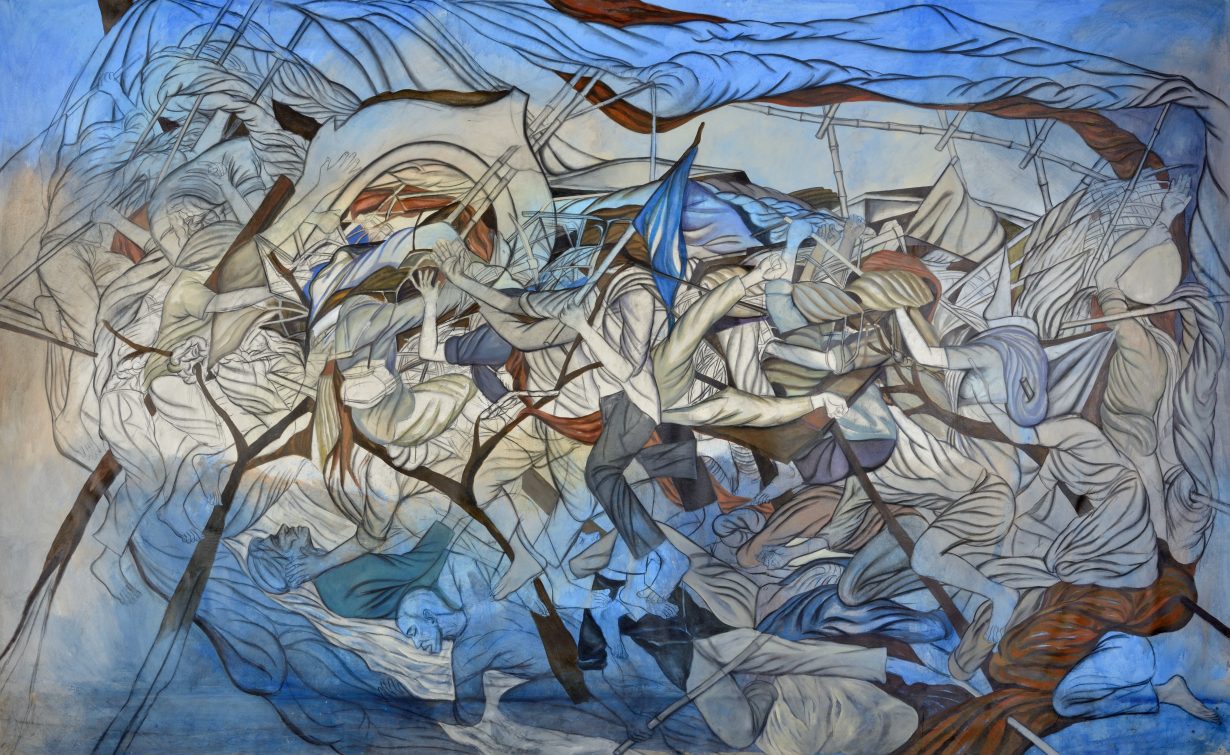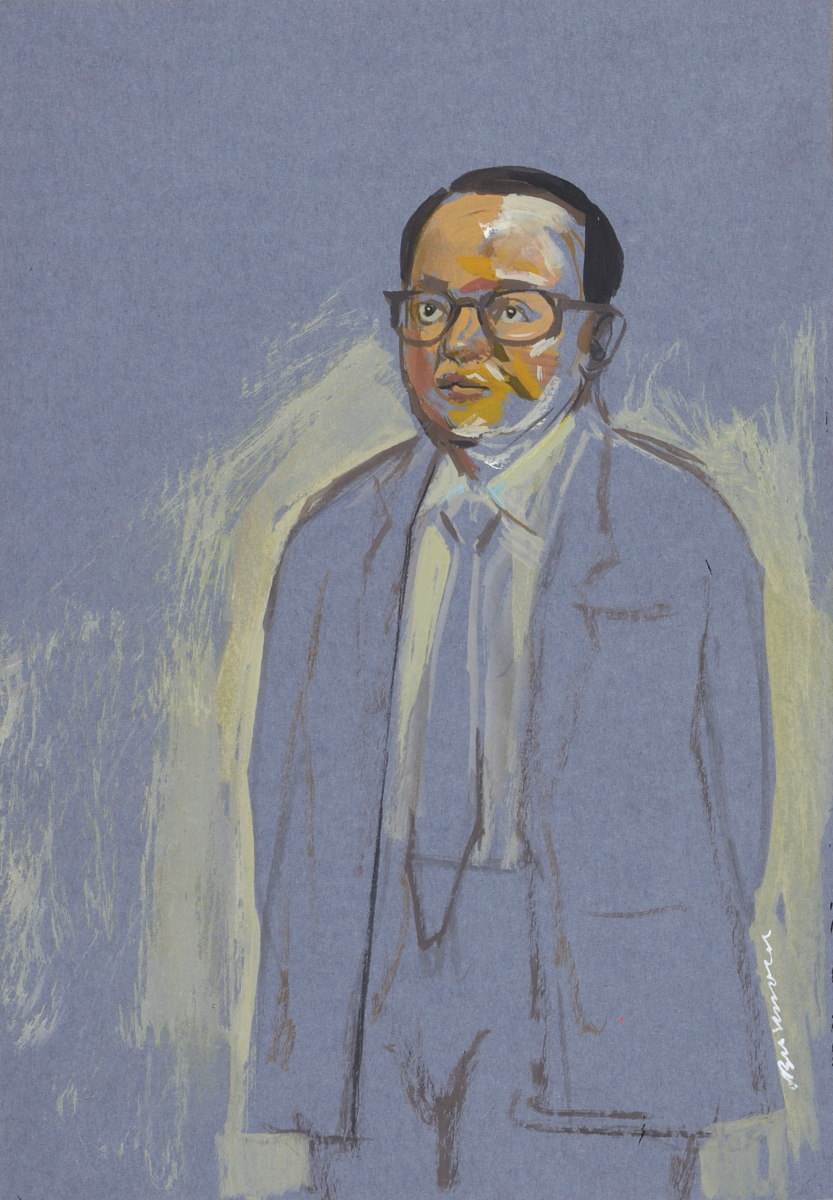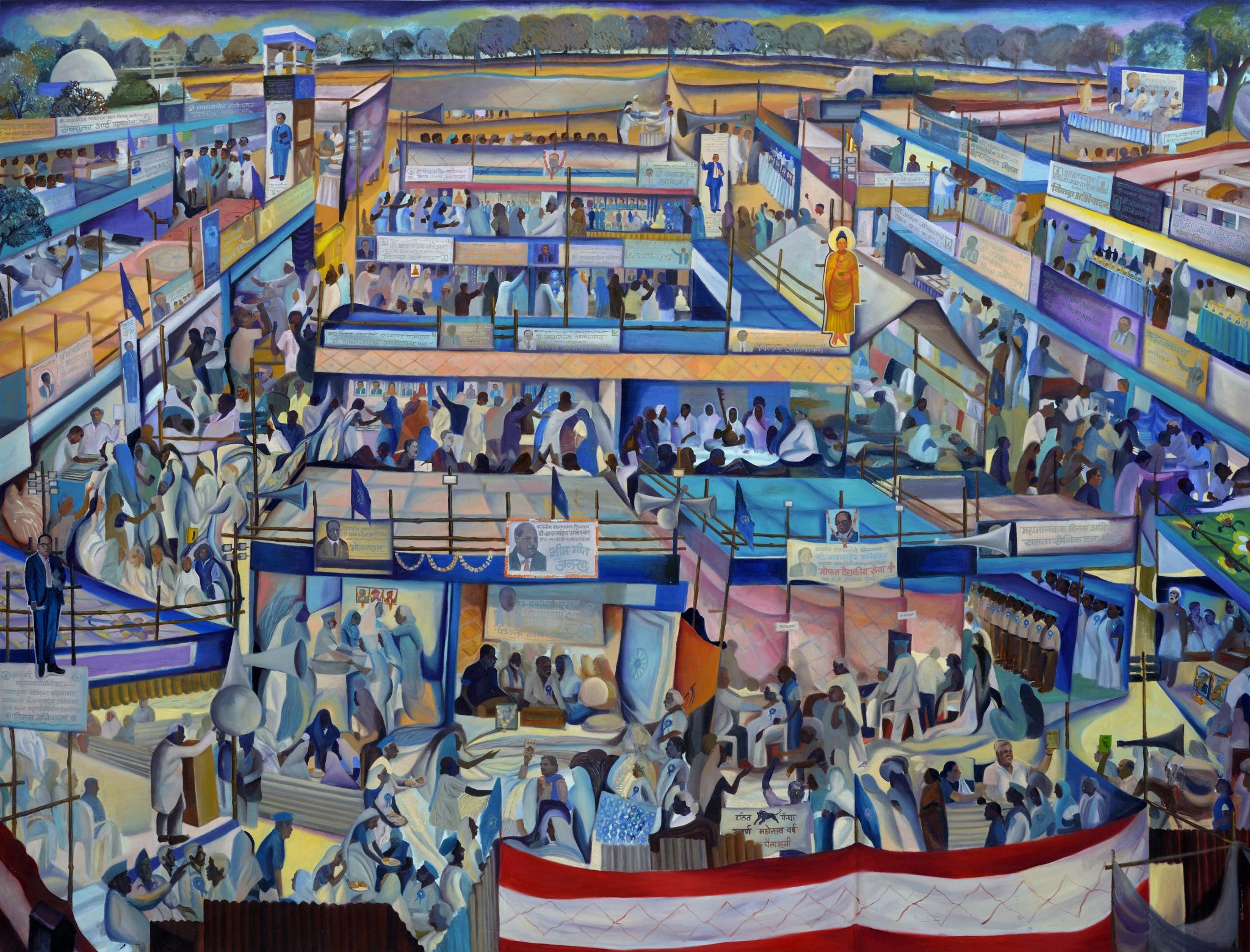The works of Vikrant Bhise are connected by the hope for justice and equality that they express
There are traditions that are held close by people who draw on their lineage to give themselves meaning in the world. But traditions are not necessarily linear; at times they are built on fictions that represent a grandiose retelling of the past and of the lives of ancestors. Some traditions are built upon people’s fiction; some combine imagination and relative truth. Historian Eric Hobsbawm famously commented on the tenor of what constitutes tradition and how customs are created: he rejected the argument about tradition being a continuing affair with the past; saying instead that it is created frequently, invented, as a sort of memory.
Memory in a Proustian doctrine is a playable drama. One recounts and plays the past into a memory, making it relatable and enjoyable in the process. As a consequence, oftentimes, these memories are a recreation of one’s desires. These actions account for the past as we want it to be. As a kind of anecdote or proverb.
But the many people who are mindlessly pushed aside into the corners of the ‘developed’ world don’t have the means or the opportunity to turn their memories into literature. They are robbed both of their story and of the means to tell it. Yet while their minds may be colonised, and thus their memories unrecorded, that memory itself cannot be stolen.
When memory acquires politics, it is a call against the reactionary tabula rasa. Memory for many of us is an ancestral gift preserved through suttas, poems, epics and orality. For this model to work requires an undaunted faith in the ability of a flexible mind. We rehearse in our minds to add higher, unsimplified meanings to ephemeral realities.

The Dalit community in India has persevered against the madness of feudal, Brahminical edicts written down as laws. We narrated our endurance through whispers of art and the actions of the Dalit Panthers or Samata Sainik Dal (a defence organisation established by Dalit social reformer Bhimrao Ramji Ambedkar and dedicated to preserving the rights of India’s oppressed peoples). Our social history has been recorded in our memories but has not yet been preserved. Almost every Dalit artist equipped with an anticaste, activist background has made it possible to view Dalit semantics. Among these last is artist Vikrant Bhise, whose figurative painting was on show at Anant Art Gallery in Noida, Uttar Pradesh. Vikrant works on large canvases. His choice of subject matter is urbane and limited to his life experiences. His subject is the untouched but you won’t find the segregated squalor of the countryside here. The diverse works in Sense and Sensibilities: A Reflective Realisation were connected by the hope for justice and equality that they express, optimistically and ironically married to the constitutionalist frame and state.
Vikrant has curated the social story of contemporary India. Chaityabhumi: Assembly of the Parinibban of Great Being (2023) refers to the site in Mumbai where Ambedkar was cremated and is visited by over a million visitors from across the world over the two days in December that mark the anniversary of his death. At the centre of the painting is the marketplace, a sea of humanity. On the horizon is a verdant forest, as Vikrant replaces concrete jungles with an ecological embrace of the congregation, paying homage to the Sangha of the Buddha, who is pictured, hovering above a stall, centre-right. Like many of his recent works it is suffused with the ambience of a cerulean blue. It’s a guarantee of his politics. Blue is a metaphor of the large, expanding, common sky, roofed over the homeless and destitute. As such it is also a call for the revolution of the oppressed.

Indeed Vikrant carries solidarity and struggle as the object of his investigation. His Archival Historicity/Dalit Panthers series (2023; 100 gouache paintings arranged in a pyramid) records the history of the movement, its rise and fall narrativised through adjacent frames.
But Vikrant does not only paint the Dalit struggle. His work also spans struggles in America, looking at Martin Luther King Jr and Palestine (Gaza Anarchy: Women & Children, 2023, for example). But ultimately these struggles are all against the casteist feudal state. The Palestinians are aiming at the coloniser. The Kashmiris are left directing that anger towards the militarised zones that occupy their private property. In Africa and elsewhere, civil protests are those of the common people, having to find natural resources. Central to Vikrant’s concern are human beings facing a perilous existence. Buried in the hubris of caste, class, religion, gender and everyday life, Vikrant wants to make them objects of beauty and decorum.
Suraj Yengde is a W.E.B. Du Bois Fellow at Harvard University and a doctoral candidate at the University of Oxford. He is the author of Caste Matters (2019).
